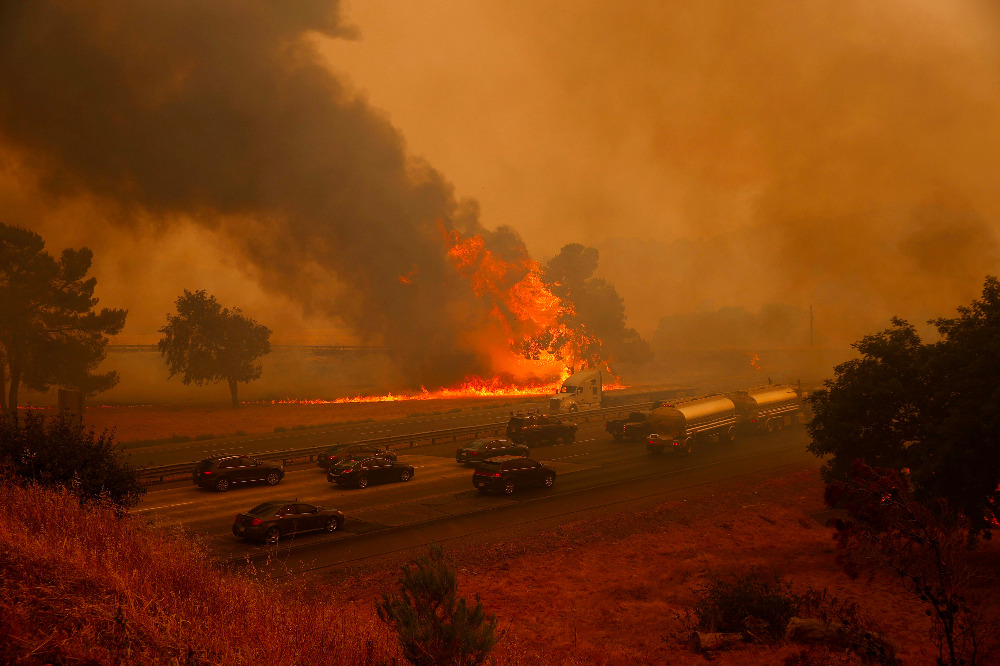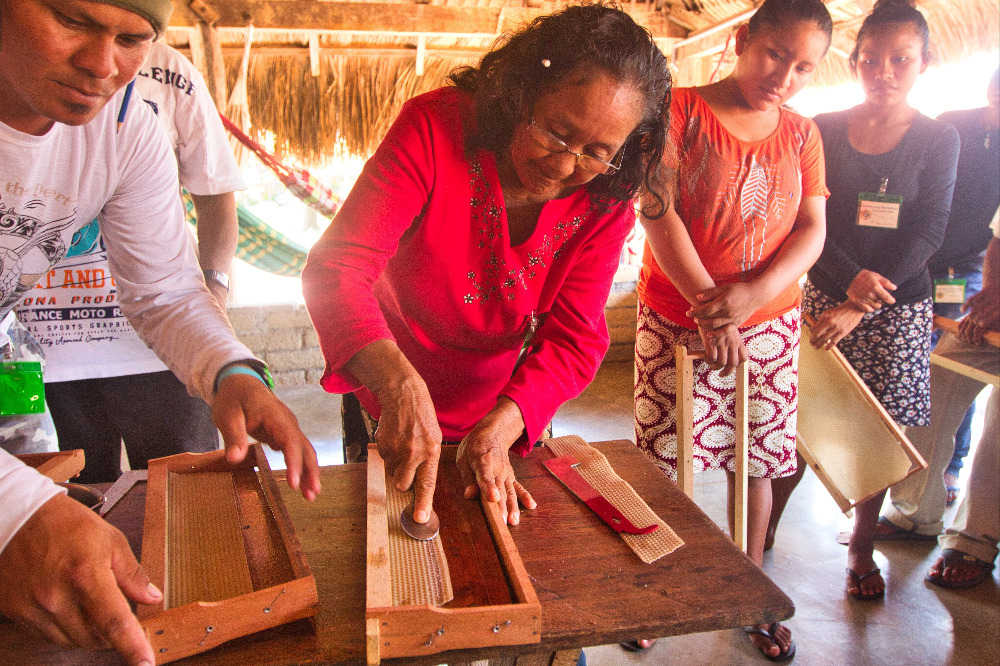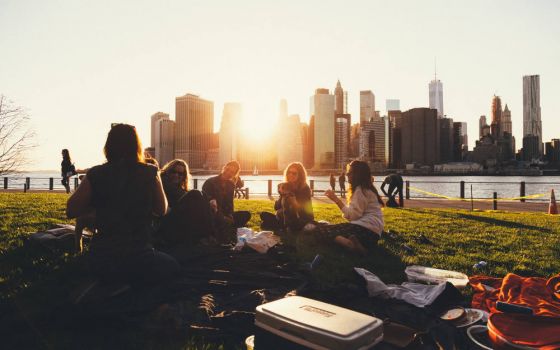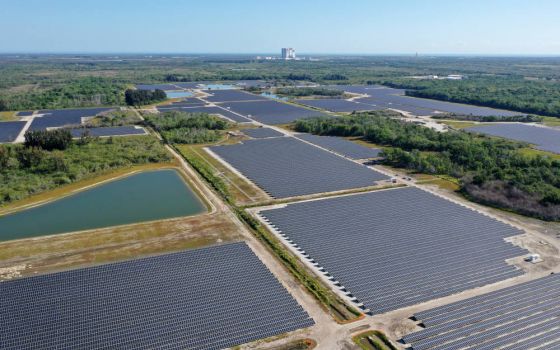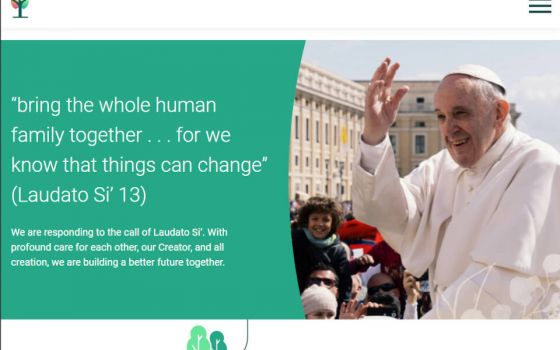If we need another reminder of what a warmer future could mean for the world, we have only to look out West. California appears to be heading for another fierce fire season, with more than 5,000 fires reported to have burned more than 100,000 acres as of Aug. 16, compared to 28,000 acres in the same period in 2019. Four of the 20 largest fires on record for the state, and four of the deadliest, occurred in the past three years, according to the state Department of Forestry and Fire Protection's Cal Fire website. The fires are linked to climate change in a vicious circle, as a warming climate makes intense fire seasons more likely, and destruction of forests exacerbates climate change.
Looking around the world, we see similar patterns. Images of orphaned koalas went viral at the beginning of 2020 when wildfires raged in Australia, killing dozens of people and destroying thousands of homes. The country's bishops
spoke out, and
faith communities aided victims while drawing the connection between the fires and the deeper issue of the climate crisis.
Fires in the Amazon basin drew the most international attention, with Pope Francis joining Latin American bishops in calling for the nations of the world to
help extinguish the blazes that had cast a pall of smoke over the region. While everyone knew of the fires in the Amazon, however, there was little attention paid to Africa, which appeared to have
even more outbreaks than South America.
But all fires are not the same, experts say, partly because the ecosystems where they occur vary widely. Fires in the Amazon basin are eating away at a tropical forest that, left to its own devices, is too wet to burn naturally. That means the fires are set by humans, usually after they have cut down trees to build a road or clear land for farming or ranching. Whenever part of the forest is cut down, new forest edges are created.
These new edges, where trees and underbrush are more exposed to sunlight and wind, become drier, so the next time someone burns a field nearby, the fire is more likely to penetrate the underbrush. Perhaps not far, but enough to
make that area even drier in a vicious circle that makes the forest more and more likely to burn.
In Africa, the fires mainly
occur on the savannah, sweeping grasslands where scientists say ecosystems have evolved with humans who have used fire for millennia to clear plots of land for planting or encourage new plant growth where cattle graze. But experts say the global impact of those fires — which
show up on time-lapse maps as a band that shifts seasonally from southern to northern African countries and back again — is not known.
People have used fire for millennia in the Amazon basin, too, but native people, who apparently burned areas to increase soil fertility with
terra preta or "dark earth," the forerunner of
biochar, did not have the impact of today's huge industrial farming and ranching operations or logging companies. The palm oil industry
has a similar impact in parts of Asia, especially on peatlands in Indonesia and Malaysia.
A lightning strike is unlikely to spark a wildfire in the Amazon basin, because the tropical forest is too wet to burn for very long. Forests in the U.S. West are different, however, and some tree species actually
need fire to reproduce. But a hotter, drier climate is likely to
make fires more frequent and intense, scientists say. And people have increasingly pushed out the edges of urban areas in search of tranquility, meaning that more are living on the
"wildland-urban interface," increasing the risk that humans will accidentally start fires and that fires will cause loss of life and property in areas that used to be uninhabited.
Wildfires get the most attention when they are felt in urban areas. The 2019 fires in Brazil hit the headlines after the
skies went dark over the metropolis of São Paulo one afternoon. In western Brazil, the state of Acre took action to control fires during the burning season after 2010, when thick smoke settled over the state capital of Rio Branco, causing health problems.
Journalist Jane Braxton Little highlighted a little-reported
risk in forests near the Chernobyl nuclear reactor, which exploded and burned in 1986. The forest soil has helped keep radionuclides trapped in soil, but fires change soil chemistry and could release those substances into the food chain. A warming climate increases the risk of fire, making the release of those substances more likely. "And larger, more intense fires could destroy the forests entirely, obliterating their ability to keep what's in Chernobyl in Chernobyl," she writes.
As fires close in on more densely populated areas, the threat to health grows. Inhalation of particulates can have
long-term health effects, leading to premature death. Firefighters are at greatest risk, but urban residents can also be affected.
This year's coronavirus pandemic has highlighted a group of firefighters who have received little attention. California's firefighting ranks are thinner this year because the pandemic has meant there are fewer prison inmates working on the front lines. A state work-release program allows inmates to work in conservation camps, with tasks that include fighting wildfires. Despite their training and the risks they face, however, they often cannot qualify for jobs as firefighters when they complete their sentences - an injustice
highlighted in a Los Angeles Times editorial.
In places where fire use is traditional, changing the ways people use forests and manage fire is a step toward prevention. In Acre and some other Amazonian jurisdictions, local governments monitor long-range forecasts and ban burning during periods of high temperatures and winds. And in southern Guyana's Rupununi region, a serious fire in 2019 led to a creative solution.
The blaze burned out of control for two weeks in a "bush island" — a forested area that provides critical wildlife habitat — near the Karanambu Ranch, which caters to nature tourists. The fire had gotten out of control when local villagers were smoking bees out of a tree hive to collect wild honey. Ranch manager Melanie McTurk
organized workshops to teach the wild honey collectors to keep beehives instead, along with helping them to market honey to other ranches and agencies in the tourism industry.
With global temperatures rising relentlessly, we need creative and effective ways of addressing the causes of both the climate crisis and its corollaries, like wildfires, more than ever.
Here's what's new on EarthBeat this week:
- We're likely to hear more about climate change from Democratic presidential candidate Joe Biden between now and November. EarthBeat's Brian Roewe reports that climate change emerged as an environmental justice issue for Biden on the campaign trail and during the Democratic National Convention.
- Three decades ago, Suzanne and Brayton Shanley set out to live a life consistent with Gospel values and stewardship of creation. NCR publisher Bill Mitchell reviews Loving Life on the Margins: The Story of the Agape Community, the chronicle of their journey of unconventional choices toward "a new way of being Catholic."
- Spectacular photos by Altaf Qadri of the Associated Press make the Ganges River come alive, from its birthplace high in the Himalayas to the Bay of Bengal. Although this river remains religiously pure to Hindus, for whom it is sacred, it is beset by problems ranging from pollution to climate change.
- A fierce windstorm known as a derecho devastated buildings and crops in Iowa in Iowa on Aug. 10, leaving half a million people without electricity and causing an estimated $4 billion in damages. Various Catholic parishes are among those struggling to recover, report Barb Arland-Fye and Anne Marie Amacher for Catholic News Service.
Elsewhere, in the world of climate news:
- While fires rage on some parts of the planet, 3.8 million residents of 27 provinces in China's Yangtze River Valley have evacuated to escape the worst flooding since 1961. Climate change will make that problem worse, as Lili Pike reports for InsideClimate News.
- Solar energy may be climate friendly, but people often view the vast arrays of panels as bad neighbors erected on land that is first stripped of vegetation, destroying wildlife habitat. But at the optimistically named news project Reasons to be Cheerful, Christopher Pollon describes a new wave of greener solar parks, with pollinator-friendly vegetation and sheep to do the mowing, if necessary.
- The captain of a Japanese-owned ship that ran aground July 25 on a reef off Mauritania was arrested Aug. 18. The ship has leaked at least 1,000 tons of oil into the ocean near sensitive marine ecosystems, according to the BBC.
- People who were children when first exposed to lead in the Flint, Michigan, water system stand to benefit most from a $600 million settlement announced Aug. 20, Paul Egan of the Detroit Free Press reports in USA Today. But the trauma is not over. A striking New York Times photo essay by Brittany Greeson and Julie Bosman shows how the coronavirus pandemic has deepened the crisis for families in Flint.
- In the latest round of a long-running battle, the Trump administration announced plans for oil and gas leases in Alaska's Arctic National Wildlife Refuge. Bill Chappell and Liz Ruskin report for NPR that environmental organizations and some indigenous groups oppose the move, and it is unclear how much interest oil companies will show, given the current slump in prices.
- Budget deficits stemming from the coronavirus pandemic have squelched plans for a bond issue to bolster coastal protection against punishing storms like Hurricane Sandy, which are likely to become more frequent in a warming climate. People of color stand to lose most, Kristoffer Tigue reports for InsideClimate News.
Upcoming Events:
